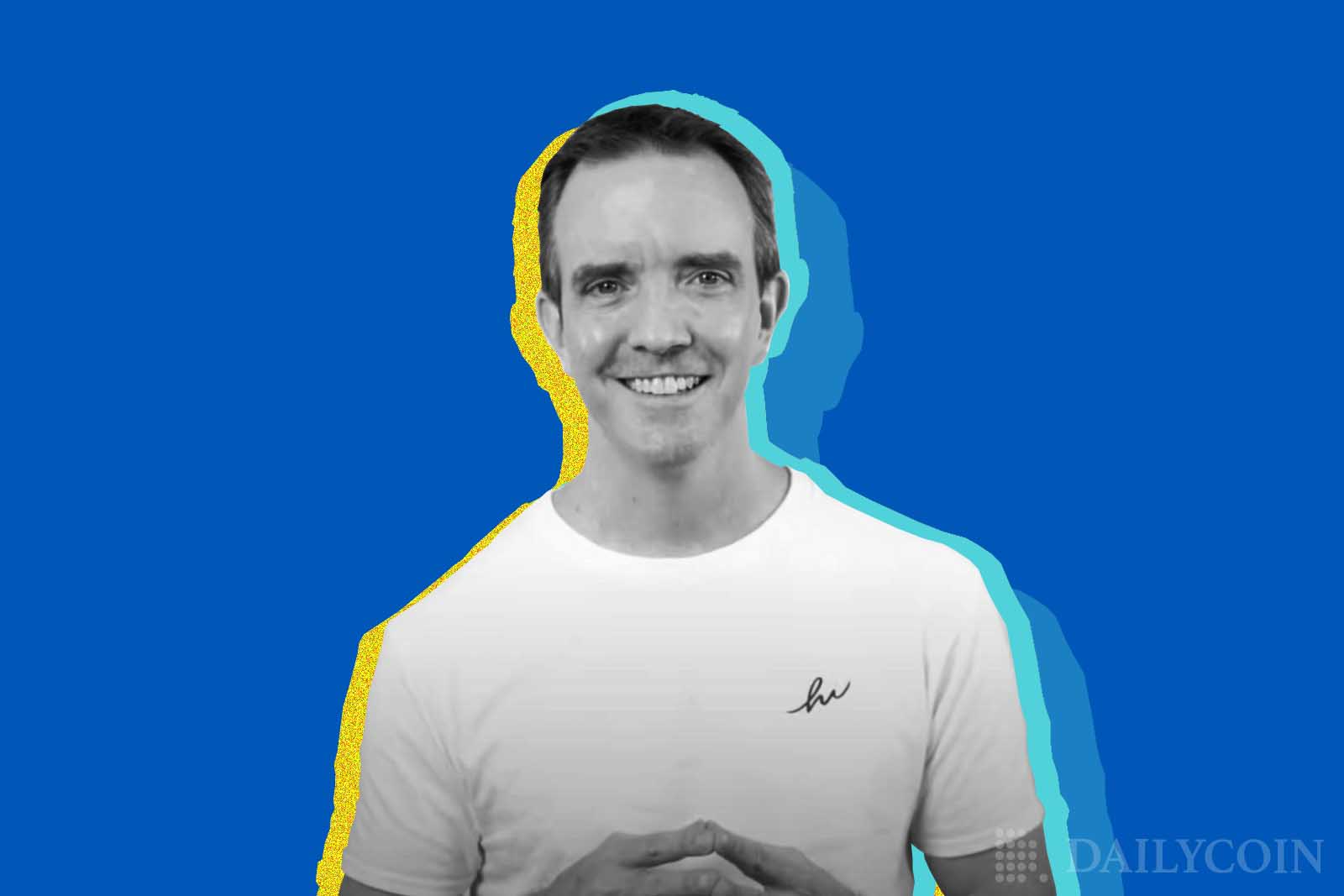
“When we started, people thought we were crazy,” says Sean Rach, the co-founder of Hi, the project that aims to build a financial crypto-fiat super app for 1 billion users.
In just over a year since its launch in 2021, Hi has attracted more than 3.5 million members worldwide through referrals alone. The project is on its way to launching its debit card and payment gateway for merchants and is in the process of developing and testing its own sidechain Hi Protocol on Ethereum.
Sean Rach, the former CMO of Crypto.com, agreed to tell DailyCoin about Hi’s journey and how the project ended up where it is now.
– What is Hi about? What makes it unique and competitive?
Hi is building the much-needed bridge between fiat and cryptocurrency. What makes us different, is that we’ve looked to address a number of barriers such as “I need to download an app” and then “I need to go through a whole bunch of processes before I can get started.” Our initial starting point was to actually make the service available on chat apps, so WhatsApp and Telegram.
Sponsored
We do have the app and we’ve tried to make the onboarding process as absolutely simple as possible. What we were really shooting at, was overly complex user experiences. We just got rid of that.
A key difference is we don’t call our customers “customers.” Our customers are our members. And our mindset is very much set on the idea that our products and services should be designed and be of service to our members.
– Tell us about the very beginning of Hi. What was the motivation for starting the project? What’s the backstory?
I had had a career in the financial services world, on the corporate side. I have had the opportunity to become the founding CMO of Crypto.com and am very proud of contributing to the early stages of that company.
Sponsored
But as Covid came on, it was time for me to take a break. It turned out that there were a number of other parties that were at that same point.
And the opportunity came about to gather some like-minded individuals, people with experience both in financial services, fintech, travel tech, etc., and start to figure out how can we bring these things together to form a new company that would have a little bit less of that focus on, let’s say crypto crypto crypto, but more on how do we make something that’s approachable.
We felt that there was a new generation necessary to kind of move things forward, and we were hoping to be that generation.
– When was that “aha” moment when you understood that you were on the right path with Hi?
That happened relatively early. Hi attempts to reduce the barrier to becoming a Hi member by using chat apps. We then have focused on a member-get-member, a referral or invite approach to building our base.
And I guess we were probably about a week or two into the project after it had gone live publicly, which was May of 2021. A couple of weeks into it, we were seeing a lot of traction. We now are about 3.5 million members.
Every one of those members came from just a few people who were at the very core of starting the business. So it was literally my address book. This is actually a core tenet of our business. We do not advertise. Your invite to your friend is a much stronger way to build a business. That was our experiment that we suddenly realized, “Oh, it’s working!”
– What is the biggest achievement of Hi that you are most proud of now?
It’s the growth of the base. Growing to 3.5 million members is not a trivial feat. And to do that in one year is relatively unheard of.
We made some decisions because we needed to have some time to actually build out the product. We’ve kind of slowed down our attempts to acquire new members because it was a little bit faster than we expected.
What we’d like to be able to do is have members who are having great, great experiences. And if we suddenly are pushing, pushing, pushing, and we get to 10 million members and yet our services aren’t built out, that’s not going to end well for anyone.
Building a durable business is a challenge for an entrepreneur. You’re trying to avoid the potholes that you could bump into, whether self-inflicted or otherwise. But at the same point, you keep your mind focused on your customer. So I think that building the base has been the most significant element.
– What is success for Hi? How do you measure it?
I think for us, success is going to be a journey, and I think that’s an important part. I talk with the team quite often that, this space is not a straight rocket ship going up. It’s a roller coaster. And with that in mind, the upward trend is where we’re having success.
What we want to achieve is our mission of being able to bring services to more and more people. When we started, people thought we were crazy. We would like to bring the services to 1 billion people. We’re at 3.5 million. We’ve got a long way to go before what we would call successful.
– And what are your key ingredients for achieving success?
If you think of probably two of the most remarkable companies in this era, both Tesla and Apple, they didn’t really rely on marketing and advertising. I should say they didn’t rely on advertising to build their business.
What they built is a product. An excellent product that people talked about, and a product that people would tell their friends “Hey, if you’re going to get a computer, get this.” “If you’re going to get a new car, get this.” We want that same thing to be associated with Hi.
– To build a great product, you have to know what exactly your users need. How do you find out what they wish for?
This is one of the most wonderful things about a cryptocurrency company. It’s that community, the members are not shy. They give you feedback right away. It comes through our various social media groups like the Telegram or Discord channels.
We also have our member support team and we’ve got metrics coming out of that, asking people, how do you rate this conversation? Was it solved? That’s how they are taken care of.
But the bigger question is often, what is the issue that was engaged in? We’ve launched a product or a feature and it didn’t work out. And people let us know right away.
That’s one of the things that in fintech, there’s a factor of “we release it” and then we need to still fix it and make it better. And that commitment to follow through is something unique in this space because you’re facing the customer directly when a crypto company has an AMA. Executives are being asked tough questions by their community about the product and we have to respond to it.
– A proper team is one of the biggest challenges for any startup. How did you go about building the Hi team? How did you select your employees?
If we’re a company that built our membership base by referral, believe it or not, we’ve done it a lot with our employee base as well. We were very active and still are in incentivizing our staff too.
If there’s someone that you work with in the past, doesn’t matter what role they are in, we’d like to talk to them and see if there’s something there.
– What were the most difficult situations that Hi was in?
A number of projects in the last few months have had some major problems. Well, we have pretty strong risk controls. We’ve kind of built the business from the beginning to have that. But when the market is so volatile, everyone is affected.
During the most recent drop, a number of our partners were under stress. Their systems were failing because of the volume that they were getting. This meant our service was slower than we wanted it to be.
Three months ago, there were definitely some sleepless nights for our team trying to make sure our systems could function because there were so many people that were trying to move their funds around and we needed to make that as smooth as possible. And luckily, I think we were able to address any issues that had happened as quickly as possible.
– What’s next for Hi? What is your main focus now?
We are moving in what we are calling a “trader mode” and a pro-version of it with more advanced analytics. We’ve been testing that out.
The next part we’re really looking at is rolling out our debit card, initially the virtual card and then a physical card to give the capability to spend crypto. And at the same time, we want to make it enticing, including the membership benefits.
And we still have merchant services, that we are working on, and allowing people to use their crypto in the real world.
Underpinning all of this, the team has been working on for our own blockchain, the Hi Protocol. We are at the testnet stage. Normally building a blockchain will take you 2 to 3 years. We are just over a year and it is already happening.
So we have a lot on our plate. I would say the next six months will continue to be very exciting.
